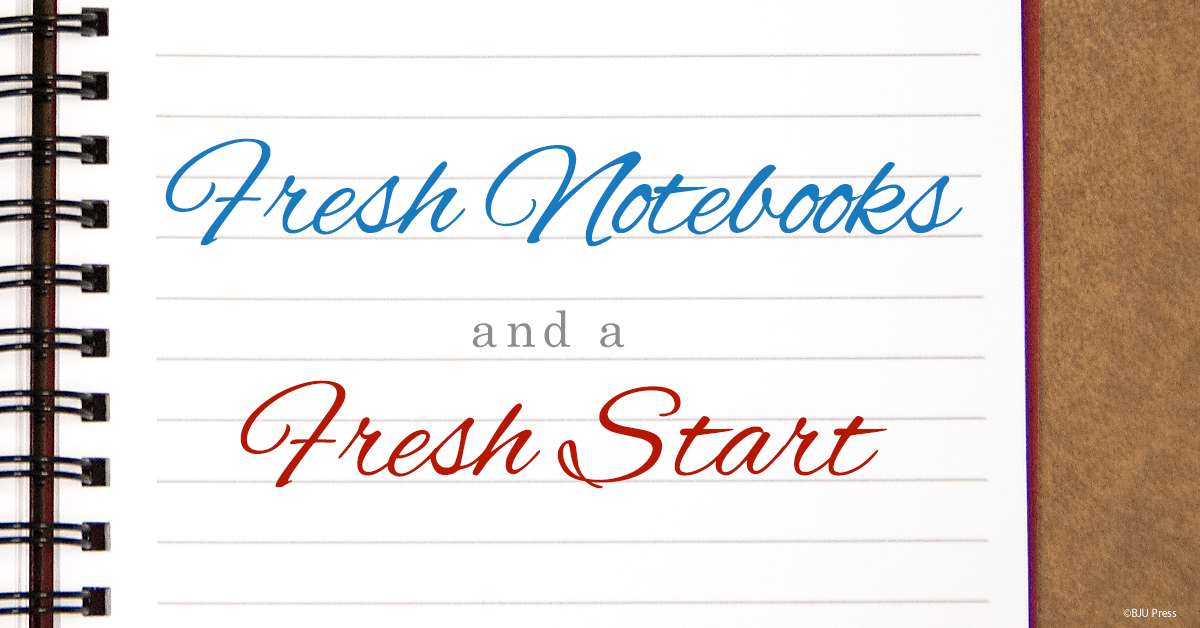Freshly sharpened pencils and new blank notebooks—that was what I always loved best about getting ready for the first day of school. Oh, sure, there were the textbooks too, but what could compare to the possibilities of little volumes full of blank pages? Knowing my notebooks would soon hold the requisite math problems and spelling words did little to dampen my enthusiasm. After all, they might also harbor fantastic stories, random thoughts, and an occasional doodle in the margin. The possibilities for those new notebooks were endless. What a relief to throw away the worn-out, used-up notebooks of last year and begin again!
Years have passed, and while my enthusiasm for the potential in blank notebooks reignites when I see school supplies go on sale, a feeling of responsibility accompanies it. Now I’m not writing just in notebooks but on human lives. How can I possibly impart even half of what my children need to know to face life in this increasingly difficult world? Spelling and grammar, history, math, science, biblical studies, humanities—the list goes on, and that’s just their school subjects! Life skills, walking with God, common sense, responsibility, and a good work ethic rarely receive written grades but are far more significant to their future success as adults.
Who can face the awesomeness of such a task? And yet, even with such a weighty responsibility, getting “back to school” is exciting! Each child seems like a “notebook” full of fresh, blank paper on which to write the learning of a new school year. And each day is a new page, right?

But these “notebooks” are much less pristine than we might wish. Despite the hope that comes with a new beginning, our fallen human nature reasserts itself quickly, and it isn’t long before torn, dirty pages appear. Even in the more nurturing environments of our homeschools, we have to correct bad attitudes, selfishness, laziness, and sometimes even cheating.
So what are we as parents to do when it becomes apparent that, in spite of all of our best efforts, this new homeschool year isn’t going to go as smoothly as we had hoped? When instead of writing on fresh pages in new notebooks, we’re competing for this year’s writing space with last year’s scribbled misunderstandings, gummed-up pages, and faulty thought equations?
Despite temptations to think otherwise, we must remind ourselves that God is the one at work in these young lives. His is the hand that writes—we are simply His pens. We may have academic and learning goals for our children (and we should), but His purpose for their lives reaches into eternity. While we grow discouraged over torn pages and rewrites, He is re-creating pages to hold the Story He writes on every willing heart.
So if, after a great start to your homeschool year, things begin getting rough and you wonder again whether you’re making any progress in the “notebooks” you’ve been given, look up! The Father’s handwriting can be hard to read sometimes, but He knows exactly which words to include in each little volume and how best to guide His pens. And in the hand of the Master Teacher, that makes all the difference.